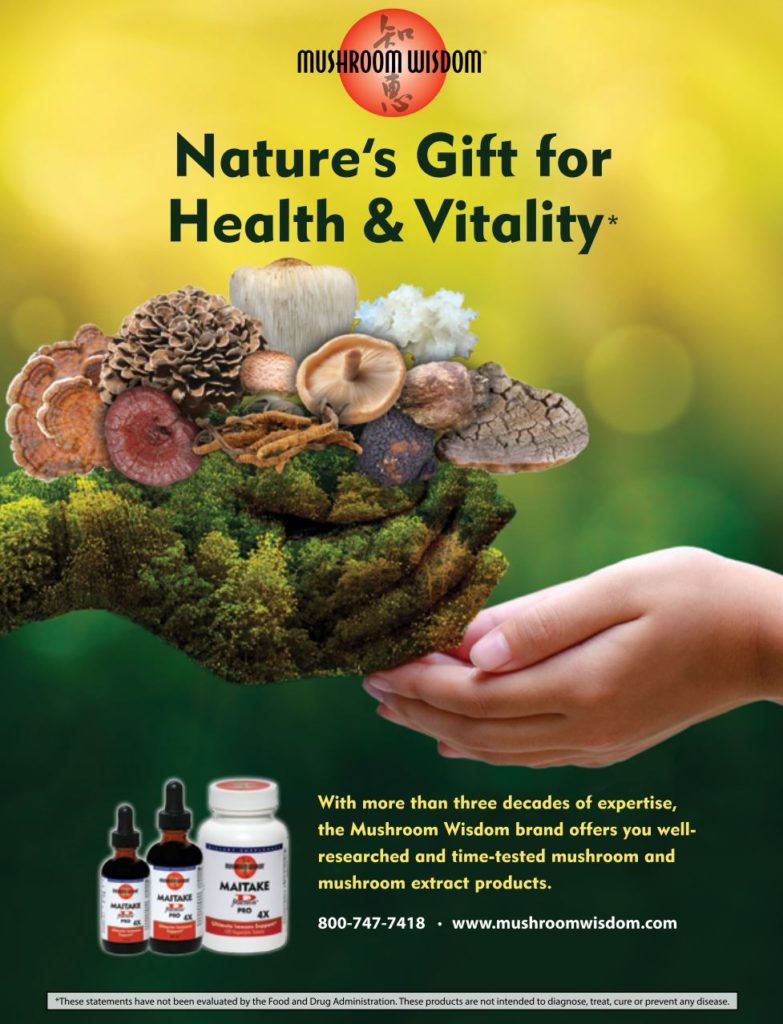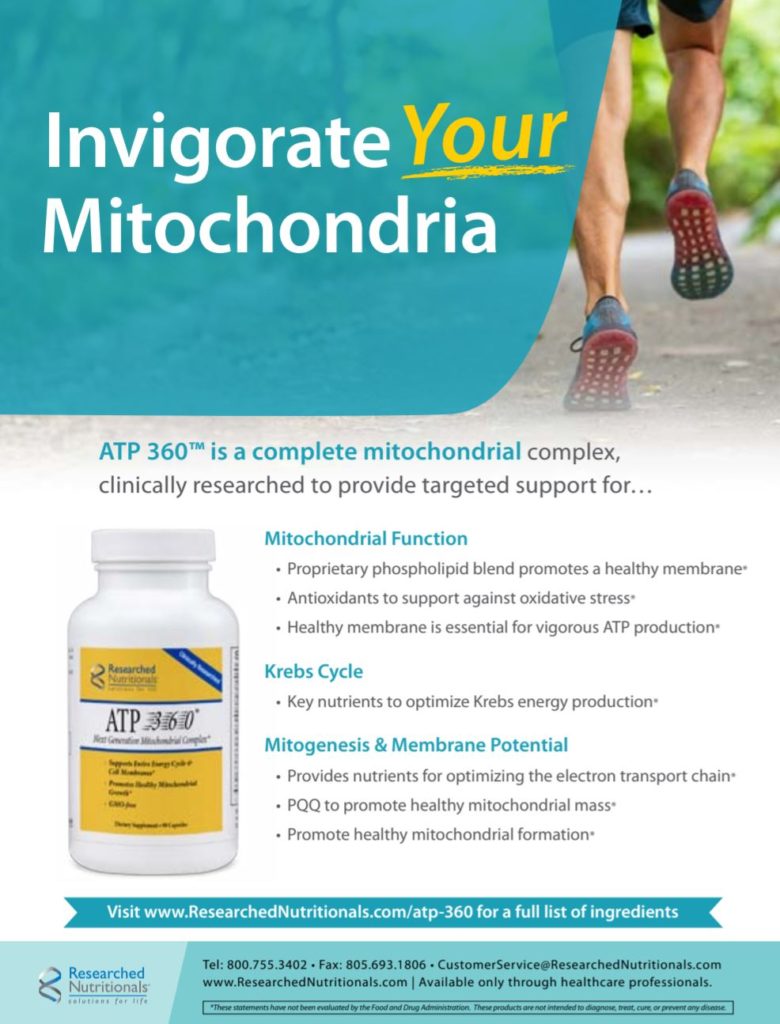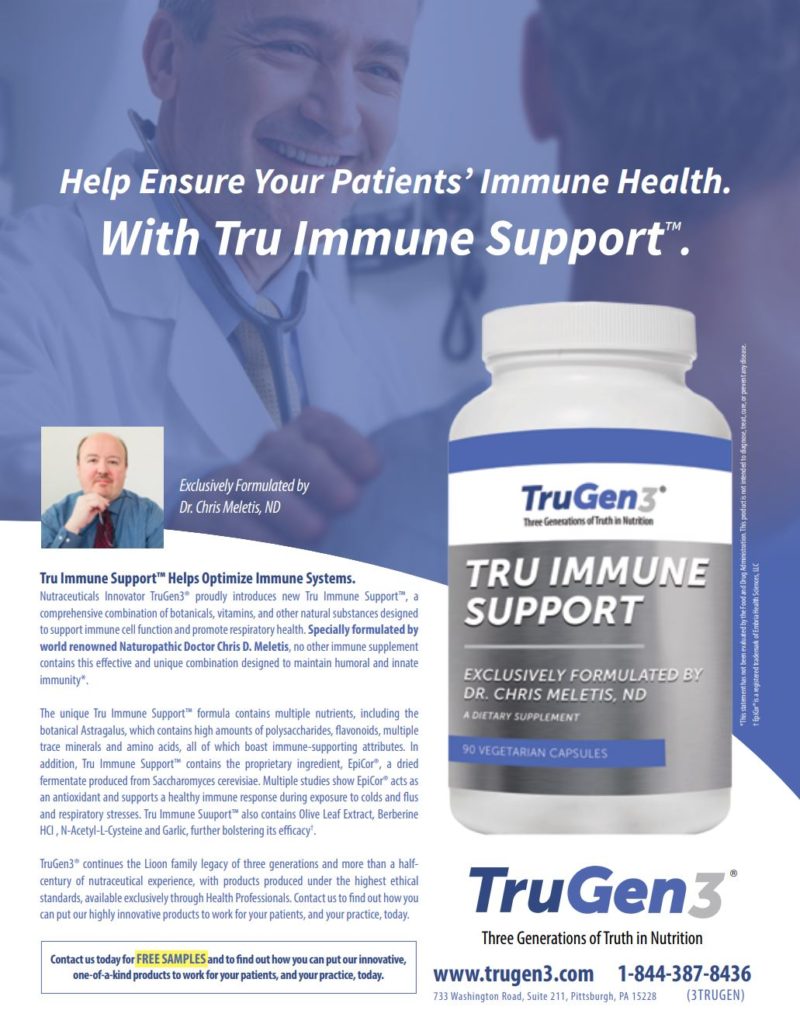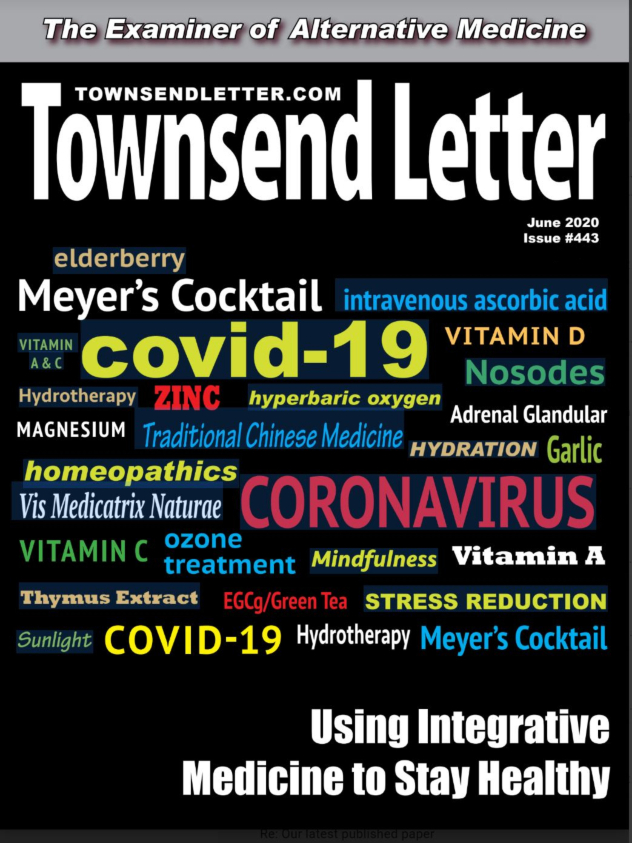Vitamins, Minerals, and Kidneys
Oxidative stress is a disruption of the balance between the production of reactive oxygen species or ROS and antioxidant defense mechanisms. Oxidative stress was identified in early kidney disease. Suggested potential useful antioxidants have been identified in food and supplements. Some proposed antioxidant supplements include vitamin B, C, D and E, coenzyme Q10, L-carnitine, alpha lipoic acid, curcumin, green tea, flavonoids, polyphenols, omega-3 polyunsaturated fatty acids, statins, trace elements and n-acetyl cysteine.16
In a double-blind randomized controlled trial, 60 patients with diabetic nephropathy were supplemented with 1200 IU of vitamin E or placebo for 12 weeks. Vitamin E supplementation was observed to increase serum levels. Decreased protein to creatinine ratio, decreased tumor necrosis factor or TNF, decreased matrix metalloproteins, and decreased malondialdehyde levels were noted. No effects on other biomarkers of kidney disease were observed. Decreased levels of inflammation, kidney injury, and oxidative were also observed.17 Vitamin E supplementation of 300 milligrams per day for 12 weeks with 20 diabetic and 20 non-diabetic patients with end stage kidney disease undergoing hemodialysis. Vitamin E supplementation improved HDL levels and vascular endothelial function.18
High homocysteine has been correlated with kidney disease. Low levels of vitamins B12, B9, and B6 have been associated with high homocysteine levels. One hundred and forty-eight patients with chronic kidney disease from the Ukraine were measured for homocysteine levels; 58.7% of patients had high homocysteine levels. Homocysteine was believed to be a specific indicator of low vitamin status, especially for vitamin B9 or folic acid.19
Recurrent kidney stone formation in patients with normal renal function who have a defect in ascorbic acid to oxalate metabolites should restrict vitamin C supplementation to less than 100 mg per day. However, a large-scale prospective study showed that the group with the highest quintile of vitamin C intake, which was greater than 1500 mg/day, had the lowest risk of kidney stone formation.20
Long-term intake of vitamin D resulted in an increased risk of hypercalcemia and hypercalciuria, which appeared to be not dose related. However, vitamin D supplementation did not increase the risk of kidney stone formation. It was recommended that large randomized controlled trials of vitamin D are needed to confirm these findings.21
Magnesium is utilized for over 300 different biochemical reactions in the human body. Magnesium helps to decrease vascular calcium and decrease phosphate absorption.22
Supplements and Kidneys
Coenzyme Q10 is a strong antioxidant and mitochondrial nutrient. Decreased Q10 levels have been observed in patients with chronic kidney disease.23 A meta-analysis of seven randomized controlled trials of patients with chronic kidney disease were selected from 721 potential papers from PubMed, Cochrane, and other medical databases were selected. Coenzyme Q10 supplementation was associated with decreased total cholesterol, decreased LDL cholesterol, decreased malondialdehyde, and decreased creatinine levels. Triglyceride levels as well as HDL cholesterol, glucose, insulin and CRP levels were not affected by Q10 supplementation.24 The effect of coenzyme Q10 supplementation was studied on 72 rats exposed to radiation-induced nephropathy. Q10 was administered at a dose of 10 mg/kg body weight. Signs of poor kidney function were observed after radiation exposure. Q10 supplementation decreased BUN and creatinine levels. Q10 seemed to attenuate glomerular and tubular function in irradiated kidneys. Administration of Q10 seemed to alleviate radiation induced kidney damage.25 The effect of benfotiamine, a derivative of vitamin B1 or thiamine and co-enzyme Q10 was studied a group of rats that had gentamycin-induced kidney damage. Gentamycin was severely toxic to rats. Benfotiamine supplementation decreased nephrotoxicity, decreased BUN and creatinine levels and decreased malondialdehyde levels. Q10 supplementation decreased necrotic tubular tissue levels and hyaline accumulation.26
Resveratrol is a natural polyphenolic compound found in grapes and other compounds. Resveratrol is a robust antioxidant that scavenges reactive oxygen species or ROS. Resveratrol is also a SIRT-1 activator, which increases enzyme functions, decreases apoptosis, and increases mitochondrial biogenesis. Resveratrol has demonstrated to have some renal protective effects.27
N-acetyl cysteine or NAC administration ameliorates renal function by decreasing oxidative damage as observed in Wistar rats with induced kidney damage following bilateral ureteral obstruction.28
Acetyl-l-carnitine improved energy metabolism in the kidneys of hypoxic-ischemic brain-injured rats.29 L-carnitine levels have been observed to be low in patients with advanced kidney disease. A systematic review of the evidence of carnitine and kidney disease was undertaken. Fourteen references were identified for review. A meta-analysis shows some useful pieces of information and the potential benefit of carnitine supplementation in patients with advanced kidney disease. The authors recommend carrying out better designed studies to show the potential benefits of this supplement.30
Lipoic acid is a free radical scavenger of reactive oxygen species (ROS) and nitric oxide (NO). It’s mechanism of action is not completely understood but is believed to operate with different kinase pathways. Lipoic acid is known to affect multiple signaling pathways and has demonstrated renal protective effects in contrast-induced kidney injury.31
Melatonin prevents drug-induced renal injury by decreasing inflammatory cytokine production and decreased aquaporin water channels in male rat’s kidneys with bilateral ureteral obstruction.32
Herbs and Kidneys
Berberine showed antioxidant, anti-apoptotic, and anti-inflammatory activity in 30 diabetic rats exposed to nephrotoxic streptozotocin. Decreased levels of BUN and creatinine were observed with berberine doses of 100 and 150 milligrams per kilogram. Improved histopathological kidney function was also observed with declining levels of BUN and creatinine.33 Increased free fatty acids and disturbed mitochondrial function play a role in diabetic kidney disease. Diabetic mice were fed berberine for eight weeks. Berberine reversed glucose and lipid metabolic podocyte damage, basement membrane thickening, mesangial expansion and glomerular sclerosis. Decreased podocyte apoptosis was also observed.34 Berberine demonstrated a protective effect on kidney and liver function in rats exposed to iron overload for two weeks. Increased iron consumption increased oxidative damage causing histopathological changes to these organs. Elevated levels of oxidative damage also increased malondialdehyde levels, which is a marker of oxidative damage. Berberine protected the liver and kidney against ferrous sulphate-induced toxicity, reduced lipid peroxides, and also chelated iron.35 Chronic diabetic kidney disease causes microvascular damage to the renal glomerulus and causes interstitial fibrosis to the renal tubules. Berberine showed a significant positive effect by decreasing total blood sugar levels, improving renal hemodynamics, improving lipid profiles, and was shown to attenuate local and systemic inflammation.36
Berberine protects renal tubular cells from ischemia and reperfusion injury in rats. Berberine protects renal tubular epithelial cells from hypoxia and reperfusion mitochondrial dysfunction by regulating sirtuin-2 and c53 pathways.37 Berberine also protects renal tubular epithelial cells from hypoxia and apoptosis through activation of HIF-1alpha in the signaling pathway suggesting that berberine could be a potential drug in diabetic ketoacidosis.38
Hydrangea or Hydrangea paniculata extract was given to mice with cisplatin-induced kidney damage. Improved renal function was observed with decreased creatinine and BUN levels. The coumarin glycosides of this plant were believed to attenuate oxidative stress, decrease tubular injury and decrease apoptosis. Decreased inflammatory cytokines and regulation of protease enzymes, including caspase, an enzyme involved in inflammation and programmed cell death, were noted. Hydrangea extracts ameliorated kidney damage by antioxidant activity and suppressing harmful renal infiltrates and tubular apoptosis. Decreased renal infiltrates down regulated signaling pathways, which further decreased macrophage and neutrophil activation.39
Hydrangea extracts containing coumarin were given to mice with acute septic kidney injury. Bioactive coumarin compounds isolated from Hydrangea paniculata were identified to be umbelliferone and esculetin. Hydrangea demonstrated specific antioxidant and anti-inflammatory activity on kidney tissue. Decreased infiltrate of macrophages and neutrophils in renal infiltrate was noted. Decreased BUN levels and decreased tubular interstitial injury were noted. Improved kidney function and increased animal survival were observed.40 Water extracts of Hydrangea paniculata were rich in coumarin glycosides. A water extract of this plant was given to diabetic rats that were exposed to strepozotocin kidney damage. Hydrangea extracts were given once per day for three months. A decrease in BUN and creatinine was observed. The hydrangea extract upregulated some enzyme activity and decreased other signaling pathways.41
Silybin from milk thistle (Silybum marianum) protected against cisplatin-induced acute kidney injury. Silybin increased sirtuin-3 or Sirt-3 expression in mice, which was shown to protect against cisplatin-induced kidney damage by decreasing tubular apoptosis and increasing mitochondrial function.42 A standardized mixture of silymarin flavonolignans from milk thistle has demonstrated antioxidant activity for reactive oxidant species (ROS). Contrast-induced nephropathy caused tubular injury in mice kidneys. Silymarin preserved renal function by improving glomerular and tubular function in a dose dependent manner in mice exposed to contrast injury.43
Apigenin is a flavonoid isolated from celery (Apium graveolens). Apigenin is an anti-hypertensive flavone that is abundant in celery. Apigenin acts as an agonist of transmut receptor-potential vanilloid-4 or TRPV4 in rats. Apigenin has demonstrated promising anti-hypertensive activity in treating hypertensive-induced renal damage in those who consume a high sodium diet.44 A hydroalcoholic extract of celery was used to treat uncomplicated urinary tract infection in mice caused by uropathogenic E.coli. A direct anti-adhesive effect of celery on the urinary epithelium was observed in a dose dependent manner within four to seven days of treatment. The extract significantly reduced the bacterial load in uncomplicated UTIs in this group of mice.45 In another study, rats were exposed to a chlorinated propanediol chemical that induced kidney damage. Apigenin decreased serum creatinine and reduced kidney damage by modulating mitochondria dependent caspase activity.46
An herbal decoction of the Chinese medicine Huangqi-Danshen was fed to a group of rats for four weeks. Improved levels of BUN and creatinine were observed after treatment. Decreased tubular atrophy and decreased interstitial fibrosis was also observed. Also improved mitochondrial function was also observed in kidney tissue of these animals.47 A water extract of Salvia miltiorrhiza called Danshen was studied against renal injury in rats exposed to cadmium. The salvia extract displayed antioxidant activity, decreased swelling of renal tubule epithelial cells, and improved overall renal function.48 Salvia miltiorrhiza extract was given to diabetic rats and was shown to decrease renal injury and damage and improve glycolipid metabolism. Multi-modal effects were observed, including phospholipid, arachidonic acid, wnt/B-catenin and TGY-B signaling inhibition.49 Salvianolic acid A (SAA) is a phenolic carboxylic acid derivative of Salvia miltiorrhiza. SAA helped to decrease inflammation and decrease renal tubular fibrosis in six rats that were exposed to doxorubicin-induced nephrotoxicity. SAA was believed to be a signaling molecule that decreases activation of natural factor beta-kappa (NF-KB) and thereby decreases inflammatory pathways.50
An aqueous extract of parsley (Petroselinum sativum) was studied on a group of rats. The parsley extract showed diuretic effects including decreased sodium reabsorption, decreased potassium secretion, increased potassium concentration in the intercellular space, and decreased potassium efflux across cellular tight junctions. An inhibition of sodium/potassium pump activity was noted leading to a reduction of sodium reabsorption and potassium loss.51 The effects of an aqueous extract of parsley on ethylene glycol-induced kidney calculi in rats were studied. A decrease in calcium oxalate stone formation and deposition were noted.52.
The effect of Diyarbakir watermelon juice on lipid peroxidation was studied in rats after exposure to carbon tetrachloride. The watermelon juice showed antioxidant activity and inhibition of lipid peroxide formation.53 However, excessive watermelon consumption was associated with high potassium levels or hyperkalemia and increased symptom burden of end stage renal disease.54 The anti-urolithiatic and diuretic effects of watermelon (Citrullus lanatus) was studied in a group of male rats. Kidney protective effects and a suppression of calcium oxylate precipitation were noted. Increased creatinine clearance, decreased urea, decreased sodium and urinary output were also observed. Watermelon pulp displayed significant anti-urolithic and diuretic activity.55
Thirty-four neutered cats were put on a nutraceutical diet containing Lespedeza, Vaccinium and Taraxacum herbs for 90 days. There was a significant decrease in BUN, creatinine in lab samples and a decrease in total protein lost from their kidneys.56 Researchers compared the effects of taraxasterol aqueous extract from dandelion (Taraxacum officinale) aerial parts and potassium citrate on oxylate crystallization in vitro. Taraxasterol and potassium citrate extract decreased calcium oxylate crystallization more than taraxasterol alone. It was hypothesized that there was a synergistic effect between Taraxacum extracts and potassium citrate.57
The effect of green asparagus (Asparagus officinalis) extract was studied in hypertensive rats. A constituent of asparagus, 2’-hydroxynicotianamine, was believed to act as an angiotension converting enzyme or ACE inhibitor. The asparagus extract decreased blood pressure levels and improved renal function.58 The effect of asparagus extract was studied in bisphenol-causing liver and kidney damage in Wistar rats. Coadministration of asparagus extract and bisphenol exposure increased total antioxidant capability and decreased malondialdehyde levels, which is indicator of oxidative stress. Decreased levels of oxidative damage to liver and kidneys with asparagus consumption were noted.59
Black seed (Nigella sativa) has been used in the prevention of kidney stones. In a placebo controlled double-blind study 60 patients consumed 500 mg of black seed or placebo twice per day for 12 weeks. Those who consumed black seed were 44.4% more likely to excrete kidney stones compared to 15.3% who took placebo. The black seed-treated group showed a decrease in the size of kidney stones in 51.8% of people while stone size was unchanged in 57.6% of those who took a placebo.60 The effect of black seed oil was studied in cisplatin-induced nephropathy in rats. The group that consumed black seed oil showed a marked decrease in histopathological changes to kidney tissue. Black seed displayed antioxidant activity and was shown to modulate enzyme activity in the kidney.61
The long-term survival rate was studied in retrospective analysis of Taiwan patients with chronic kidney disease who took a Chinese herbal medicine containing Rheum officinale. The Chinese herbal medicine improved long-term survival in patients with CKD suggesting that this medicine is an effective adjuvant in individuals with chronic kidney disease.62
An aqueous extract of hibiscus (Hibiscus sabdariffa) was given to rats for 28 days with adenine-induced kidney disease. The hibiscus extract demonstrated a similar effect to the angiotensin converting enzyme or ACE inhibitor drug lisinopril. The hibiscus extract was further demonstrated to decrease the progression of chronic kidney disease.63
Goldenrod (Solidago virgaurea) has been used for centuries for the treatment of urinary tract disease. Goldenrod has displayed anti-inflammatory, anti-urothiac, diuretic, anti-spasmodic, and analgesic effects. Goldenrod has been used for urinary infections and inflammation, to prevent kidney stone formation, and to remove urinary gravel. It appears to be safe and non-toxic and no adverse side effects were noted.64
Curcumin was reported to have kidney protective effects.65 Four hundred and fourteen patients with chronic kidney disease with a glomerular filtration rate between 15 to 60 ml/min were included in this randomized controlled trial. Patients consumed 90 milligrams of micro-particle curcumin once daily or placebo for six months.
Butein from Chinese lacquer tree (Rhus verniciflua) has been shown to improve kidney function in cisplatin-induced acute renal failure in rats. Butein upregulates aquaporin 2 channels in the kidney cortex and medulla.66
Other herbal medicines have also been suggested to improve kidney function, including beets, chamomile, Chanca piedra, cinnamon, ginger, gravel root, horsetail, marshmallow, nettles, and uva ursi to name a few.
Toxins and Kidneys
Certain dietary supplements and herbs have been identified to cause potential kidney toxicity and renal damage. Implicated herbs include Chinese yew (Taxus celebica), Callilepsis laureola, morning cypress (Cupressus tunebris), Saint John’s wort (Hypericum perforatum), Thunder God vine (Tripteryglum wildfordi), tribulus (Tribulus terrestris), and wormwood (Artemnesia alba). Herbs no longer sold in the US include chocolate vine (mu tong or Caulis aristolochiae), Guang fang ji (Artistolochia fungchi), and Ma huang (Ephedra sinensis). Other dietary supplements include sheep bile, chlorella, chromium, creatine, fish gall bladder, glucosamine, hydrazine, NO-xplode, Spanish fly, and excessive consumption of vitamins A, C, D and germanium. In descending order of toxicity, the top two offenders were aristolochic acid in the herb Guang fang ji and chocolate vine. Kidney toxic foods include ajenkol bean, gall bladder from carp fish, puffer fish, star fruit, and uncooked yam powder or juice.67
Aristolochic acid from Aristolochia species of herbs causes nephropathy. In the 1990s aritstolochia was used in various weight-loss products. Consumption of products containing aristolochic acid causes kidney injury and renal damage. Increased serum creatinine, significant anemia, and histopathological changes in renal interstitial infiltrates causing severe fibrosis occurred.68
Chronic kidney disease is associated with an increased level of uremic toxins. Certain toxins may be modified by the gut microbiota. Potential toxins identified include phosphates, l-carnitine, choline, phosphatidylcholine, tryptophan and tyrosine, tri-methylamine-n-oxide, indoxy sulphate, p-cresyl sulphate, and indole-3 acetic acid.69
Recommendations
It is clear that diet and nutrition plays an important role in kidney function. Water intake can be measured and increased in individals with stage 2 and 3 chronic kidney disease. There are exceptions to increased water intake especially with people with lung and peripheral edema. Fluid restrictions are further necessary in individuals with advanced kidney disease, including stage 4 and 5 levels. Salt and sodium should be restricted in usually all levels of kidney disease, especially with high dietary intake. Protein intake can be measured and modulated in individuals with high dietary intake. Electrolyte levels, including potassium and phosphorus, can be monitored and measured along with creatinine and GFR in basic lab tests. Recommendations can be made after reviewing lab values. Eating a diet rich in fresh fruits, vegetables, whole grains and cereals and high-quality protein is strongly suggested. Limiting processed foods, highly refined sugar foods, excessive protein and alcohol is also suggested. Eating better can perhaps help kidney function and improve overall health.
A review of the scientific literature suggests that vitamins and minerals, supplements and herbal medicines may help to maintain and, in some cases, improve kidney health. Many of the studies are done on animal models that include rats and mice. While interesting it is important to note that these are not humans. There are some human studies that are interesting and show benefit, but it clear that most of the conclusions are preliminary at best. Further randomized double blind placebo-controlled trials are suggested with larger patient populations and limiting extraneous factors. This is not to say that certain nutrients and supplements are not beneficial and cannot actually improve kidney function. There are many vitamins, minerals, supplements and herbal medicines as discussed in this article that have been shown to prevent kidney decline and may improve renal function. How they combine with other nutrients is not known but probably not harmful in recommended doses. They are certainly worth a try with individuals with declining kidney function, especially earlier in stage 2 and 3 levels of kidney disease. Discussing a treatment plan with a licensed naturopathic physician or other qualified health professional is recommended. Of course, it is caveat emptor or patient trial and error. Like the canary in the coal mine, I think kidney function decline with early kidney disease can be averted with dietary changes and nutritional supplementation.

Douglas G. Lobay is a practicing naturopathic physician in Kelowna, British Columbia. Dr. Lobay graduated with a bachelor of science degree from the University of British Columbia in 1987. He then attended Bastyr College of Health Sciences in Seattle, Washington, and graduated with a doctorate of naturopathic medicine in 1991.
While attending Bastyr College, he began researching the scientific information on the use of food, nutrition, and natural healing. Dr. Lobay enjoys research, writing, and teaching others about good health and good nutrition.
He is the author of four books and numerous articles in magazines. He also enjoys hockey, skiing, hiking, tennis, and playing guitar.
Complete References are found on the next page











